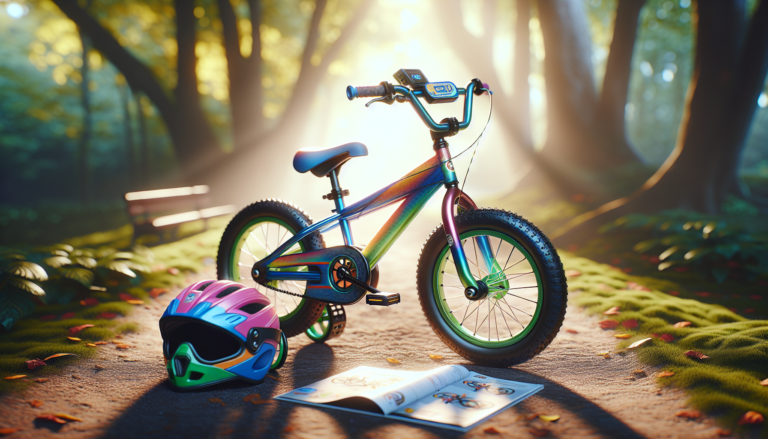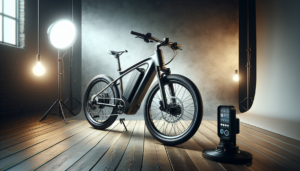Learning to ride a bicycle is an exciting milestone for people of all ages. While it may seem daunting at first, with the right guidance, practice, and safety precautions, anyone can master the skill of riding a bike. This comprehensive guide will walk you through the process step-by-step, helping you gain confidence and enjoy the freedom that comes with cycling.
Introduction to Bike Riding
Why Learn to Ride a Bike?
Riding a bicycle offers numerous benefits, including improved physical fitness, increased mobility, and a fun way to explore the outdoors. It’s an eco-friendly mode of transportation that can help reduce your carbon footprint and save money on gas. Additionally, learning to ride a bike can boost your confidence and provide a sense of independence.
Cycling is a low-impact exercise that strengthens your legs, improves cardiovascular health, and enhances balance and coordination. It’s a great way to incorporate physical activity into your daily routine, whether you’re commuting to work or school, running errands, or simply enjoying a leisurely ride in the park.
Essential Gear for Bike Riding
Before you start learning to ride, it’s crucial to have the proper gear to ensure your safety and comfort. The most important piece of equipment is a well-fitting helmet. A helmet protects your head from potential injuries in case of a fall or collision. Make sure to choose a helmet that meets safety standards and fits snugly on your head.
Other protective gear to consider includes knee and elbow pads, which can help cushion your joints if you fall. Wearing closed-toe shoes with good traction will also provide better grip on the pedals and prevent your feet from slipping. Opt for comfortable, breathable clothing that allows for easy movement while riding.
In addition to safety gear, make sure your bike is in good working condition before each ride. Check the tire pressure, brakes, and chain to ensure they are functioning properly. A well-maintained bike will provide a smoother and safer riding experience.
Preparing to Ride
Choosing the Right Bike
When learning to ride, it’s essential to choose a bike that fits your body size and skill level. For beginners, a bike with a low step-through frame can make it easier to get on and off. Make sure you can stand over the frame with both feet flat on the ground, and there should be a slight bend in your knees when the pedal is at its lowest point.
Consider the type of terrain you’ll be riding on most often. If you plan to stick to paved roads and bike paths, a road bike or a hybrid bike may be a good choice. For off-road adventures, a mountain bike with wider tires and suspension can provide better stability and traction.
Adjusting Your Bike
Once you have the right bike, it’s important to adjust it to fit your body properly. Start by setting the saddle height. When seated on the saddle with your foot on the pedal at its lowest point, your leg should be slightly bent at the knee. This will allow for optimal pedaling efficiency and comfort.
Next, adjust the handlebars to a comfortable height and position. You should be able to reach the handlebars easily without straining your back or shoulders. Make sure the handlebars are centered and tightened securely to prevent them from rotating during rides.
Safety Gear and Precautions
Before each ride, take a few moments to put on your protective gear. Fasten your helmet securely and make sure it sits level on your head, covering your forehead. If you’re using knee and elbow pads, ensure they are snug and won’t slip during movement.
It’s also crucial to follow basic bicycle safety tips. Always ride in the same direction as traffic and obey traffic signs and signals. Use hand signals when turning or stopping to communicate your intentions to other road users. Be aware of your surroundings and watch for potential hazards such as potholes, debris, or opening car doors.
Step-by-Step Guide to Riding a Bike
Step 1: Balancing on the Bike
Start by finding a flat, open area with a smooth surface, such as an empty parking lot or a quiet street. Lower the saddle so that your feet can touch the ground comfortably while seated. This will give you more control and make it easier to balance on the bike.
Get on the bike and place both feet on the ground. Practice lifting your feet off the ground and balancing the bike between your legs. You can gently push off the ground with your feet to move forward slowly, allowing you to get a feel for the bike’s weight and balance.
Step 2: Coasting and Steering
Once you feel comfortable balancing, try coasting on the bike. Push off the ground with both feet and let the bike glide forward. Keep your feet off the pedals and just focus on maintaining balance. Use your hands to steer the bike in the direction you want to go.
Practice coasting for short distances, gradually increasing the length of your glides. As you coast, try to keep your body relaxed and your eyes looking ahead. Avoid fixating on the ground or the front wheel, as this can make it harder to maintain balance.
Step 3: Pedaling and Moving Forward
When you feel confident coasting on the bike, it’s time to start pedaling. Place one foot on a pedal at the 2 o’clock position, ready to push down. Use your other foot to give yourself a push off the ground, and then start pedaling. As you pedal, focus on maintaining a steady rhythm and keeping your body centered over the bike.
Start with short distances and gradually increase the length of your rides as you become more comfortable pedaling the bike. Practice turning corners by gently leaning your body in the direction you want to turn and using your handlebars to steer. Remember to keep your eyes looking ahead and anticipate any obstacles or changes in terrain.
Step 4: Braking and Stopping
Learning how to brake and stop safely is a critical skill for any cyclist. Most bikes have two brakes – one on the handlebars for the front wheel and one for the rear wheel. When braking on a bike, it’s generally best to use both brakes simultaneously, applying gentle pressure to slow down gradually.
Practice braking in a safe, open area. Begin by pedaling at a slow speed and then apply the brakes to come to a complete stop. As you brake, keep your weight centered over the bike and your feet ready to touch the ground if needed. Avoid slamming on the brakes or braking too hard, as this can cause the bike to skid or throw you off balance.
Practice Tips and Techniques
Finding the Right Practice Location
When learning to ride a bike, it’s essential to choose a safe and suitable practice location. Look for a flat, open area with minimal traffic and obstacles. Empty parking lots, quiet streets, or park paths can be great options. Make sure the surface is smooth and free of debris or potholes that could cause you to lose balance or control.
As you gain confidence, you can gradually progress to areas with slight inclines or gentle slopes. These can help you practice shifting your weight and maintaining balance on varied terrain. Always prioritize safety and avoid practicing in crowded or high-traffic areas until you feel fully comfortable with your riding skills.
Practicing Balance and Coasting
Balancing on a bike is a fundamental skill that requires practice. Spend time getting comfortable with the feeling of balancing the bike between your legs. You can practice this skill by sitting on the saddle with both feet on the ground and gently lifting your feet off the ground for short periods.
Once you feel stable balancing, try coasting on the bike. Push off the ground with both feet and let the bike glide forward without pedaling. Focus on keeping your body relaxed and your weight centered over the bike. Use your arms to steer and maintain balance. Practice coasting for longer distances as you become more comfortable.
Improving Pedaling and Steering
Efficient pedaling is key to moving forward smoothly on a bike. When pedaling the bike, aim for a steady, consistent cadence. Avoid pedaling too fast or too slowly, as this can make it harder to maintain balance and control. Keep your feet flat on the pedals and your knees pointing forward.
As you pedal, practice steering the bike by gently turning the handlebars in the direction you want to go. Look ahead and anticipate turns or obstacles. Lean your body slightly in the direction of the turn to help the bike navigate smoothly. Remember to keep your grip on the handlebars relaxed and avoid jerking the steering.
Mastering Braking and Stopping
Effective braking is crucial for maintaining control and safety while riding. When braking on a bike, use both brakes simultaneously by applying gentle, even pressure. Avoid grabbing the brakes too hard or suddenly, as this can cause the wheels to lock up or skid.
Practice braking in a safe area, starting at slow speeds and gradually increasing your speed as you become more comfortable. Anticipate when you’ll need to stop and begin braking early to allow enough time to come to a complete stop. Keep your weight centered over the bike and your feet ready to touch the ground if needed.
Staying Safe While Riding
Understanding Road Safety
To stay safe while riding, it’s essential to understand and follow road safety rules. Always ride in the same direction as traffic and obey all traffic signs and signals. Use designated bike lanes when available and be predictable in your movements. Signal your intentions to turn or stop using hand signals.
Be aware of your surroundings at all times. Watch for pedestrians, other cyclists, and vehicles. Make eye contact with drivers to ensure they see you before proceeding through intersections. Avoid riding too close to parked cars, as doors may open unexpectedly. Always yield to pedestrians and be cautious when passing other cyclists.
Using Protective Gear
Wearing protective gear is crucial for reducing the risk of injury while cycling. Always wear a properly fitting helmet that meets safety standards. The helmet should sit level on your head, covering your forehead, and be securely fastened under your chin.
Consider wearing additional protective gear such as knee and elbow pads, especially when learning to ride or navigating uneven terrain. Gloves can provide better grip on the handlebars and protect your hands in case of a fall. Wear bright or reflective clothing to increase your visibility to other road users, especially in low-light conditions.
Riding in Different Conditions
As you gain experience, you may encounter various riding conditions. When riding in wet weather, slow down and allow extra distance for braking, as roads can be slippery. Avoid riding through deep puddles or standing water, as they may conceal hazards.
If riding at night or in low-light conditions, make sure your bike is equipped with proper lighting. Use a white front light and a red rear light to increase your visibility to others. Wear reflective clothing or accessories to further enhance your visibility.
When riding on trails or off-road, be prepared for uneven surfaces, rocks, and roots. Adjust your speed and riding technique accordingly. Use your body weight to shift your center of gravity and maintain balance over rough terrain. Always yield to hikers and be mindful of your impact on the environment.
Conclusion and Encouragement
Learning to ride a bike can be a fun and rewarding experience. With practice, patience, and the right techniques, anyone can master the skills needed to enjoy cycling. Remember to start slowly, practice in safe environments, and always prioritize safety by wearing protective gear and following road rules.
Keep Practicing and Stay Motivated
Consistency is key when learning to ride a bicycle. Set aside regular practice time and gradually increase the duration and difficulty of your rides. Celebrate your progress and don’t be discouraged by occasional setbacks. Every fall or wobble is an opportunity to learn and improve.
Stay motivated by setting goals for yourself, whether it’s riding a certain distance, tackling a new route, or joining a group ride. Remember that everyone starts as a beginner, and with dedication and practice, you’ll soon be riding with confidence and ease.
Join a Community of Riders
Connecting with other cyclists can provide support, encouragement, and opportunities to learn from more experienced riders. Look for local bike riding communities or clubs that welcome beginners. Participate in group rides, workshops, or events to meet fellow cyclists and expand your skills.
Online forums and social media groups can also be valuable resources for asking questions, sharing experiences, and finding inspiration. Engage with the cycling community to learn tips, discover new routes, and celebrate the joys of riding together.
Remember, cycling is not just a means of transportation or exercise; it’s a way to explore the world, challenge yourself, and connect with others. Embrace the freedom and adventure that comes with riding a bike, and enjoy the journey as you learn and grow as a cyclist.






